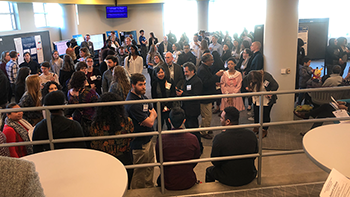Exploring Economic and Occupational Correlates of American Adult Anxiety Levels From 2010 - 2018
Description/Abstract/Artist Statement
Recent trends show that levels of anxiety have been increasing in Americans the past few years (American Psychiatric Association, 2018). In this project, we explored economic and occupational reasons that may explain this increase, such as wage stagnation, a rapid increase in information availability, and changes in work culture. Using data from 2010-2018, this research presents how trends of anxiety have changed and what causes those trends. Findings show an unexpected trend in “feelings of anxiousness, worry, or nervousness”, with the most fluctuation in the response “weekly” out of the choices daily, weekly, or monthly. Surprisingly, we also discovered a flat trend line in some responses, as opposed to our initial assumption that the data would show a positive linear trend line. Future research, including ongoing interviews with employees about how work stress is evolving in the modern world, are discussed.
Faculty Advisor/Mentor
Andrew Bennet
Presentation Type
Poster
Disciplines
Laboratory and Basic Science Research | Organizational Behavior and Theory | Other Business | Other Psychology
Session Title
Poster Session
Location
Learning Commons, Atrium
Start Date
2-8-2020 8:00 AM
End Date
2-8-2020 12:30 PM
Exploring Economic and Occupational Correlates of American Adult Anxiety Levels From 2010 - 2018
Learning Commons, Atrium
Recent trends show that levels of anxiety have been increasing in Americans the past few years (American Psychiatric Association, 2018). In this project, we explored economic and occupational reasons that may explain this increase, such as wage stagnation, a rapid increase in information availability, and changes in work culture. Using data from 2010-2018, this research presents how trends of anxiety have changed and what causes those trends. Findings show an unexpected trend in “feelings of anxiousness, worry, or nervousness”, with the most fluctuation in the response “weekly” out of the choices daily, weekly, or monthly. Surprisingly, we also discovered a flat trend line in some responses, as opposed to our initial assumption that the data would show a positive linear trend line. Future research, including ongoing interviews with employees about how work stress is evolving in the modern world, are discussed.


